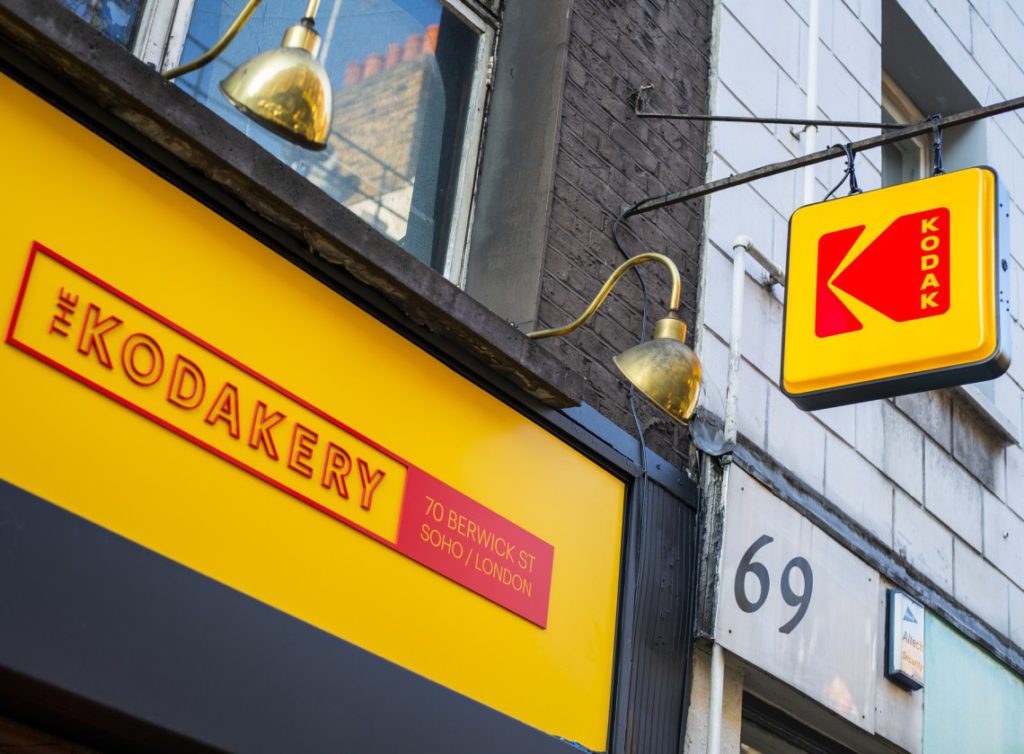The era of retail complacency is over. Retail giants such as Macy’s and Sears have crumbled due to their failure to acclimatise to the changing retail market and their overestimation of the amount of square footage they could sustain. Through a combination of declining foot traffic, an over-reliance on heavy discounting and opening too many stores in the mall boom, both companies are on the brink of collapse. Today it’s not enough to have either a physical or online presence alone. For your business to survive and thrive, you need to diversify to create loyal customers. And temporary stores are the answer.
Dr Charlotte Shi, lecturer in fashion marketing and branding at Nottingham Trent University has said; “Pop-up shops have given retailers the opportunity to interact with customers, express the inspiration behind their collections and tell the story behind their products.” Having emerged in Los Angeles in the 1990s, pop-ups are now found across the globe; from New York, London Paris and Hong Kong. To engage customers, provide an experience and increase awareness, pop-ups are the perfect solution.
It’s easy to see why in recent years they have grown in popularity; setting up a pop-up store costs an average of $2,000 compared to the $98,000 needed for a traditional brick-and-mortar store, while average sales per square foot are $1,230 for a pop-up compared to $341 compared to a permanent retail location. Temporary retail stores are now estimated to bring in £2.3 billion annually for the UK economy alone. Launching a physical retail store, even in the short term, provides the perfect opportunity to appeal to new customers with a higher chance of retaining them. Pop-up stores are an engaging and financially fruitful way of engaging with your customer and increasing their lifetime value.
As a retailer, you’ll know that brands have long-been abandoning the conventional model of the brick-and-mortar store. However this does not mean retailers are neglecting the necessity of curating a relationship with their customers. Retailers are using pop-up stores as an innovative way of engaging with and creating an experience for customers.
Importance of Brick-and-Mortar Stores
It would be easy to dismiss the importance of retail stores in the 21st century, but they are still vitally important. It was reported that:
- 94% of all retail sales happen offline in physical stores
- 85% of consumers prefer to shop in a physical store
- Retailers closing a physical store experience a 10% drop in online sales
As it is evidently expensive to have a permanent retail store, temporary pop-up stores can be a cheaper, and far less risky venture.
Pop-up stores are a great way to connect with a global audience, giving you the opportunity to showcase your products all around the world, and providing you the chance to get feedback on how effective your products are in different locations.
Pop-ups are the future. So here’s what can be learned from the best in the business on create loyal customers from strategic use of temporary retail stores.
Unique Experiences: Hermes, 2016
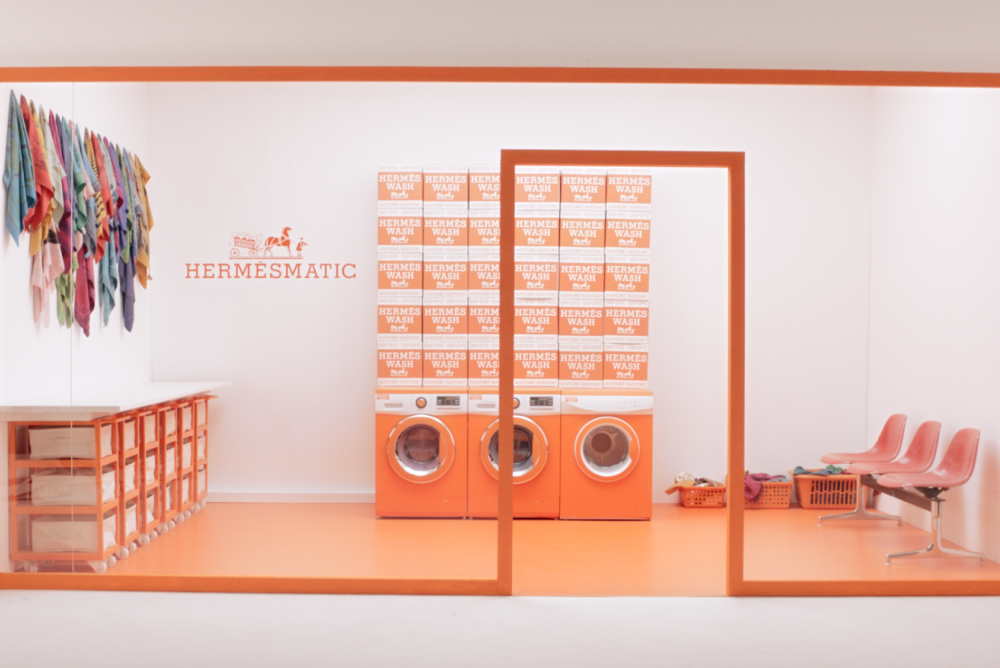
Creating experiences within your pop-up stores is the perfect way to grow your relationship with your client in an personalized and memorable way. Hermès launched a perfect example of this, creating laundromat services through their HermèsMatic project, located in their New York and Paris stores.
The aim of the project was to revive customer’s old Hermès scarves, free of cost, through a three-part dyeing process. A space next to the laundromat was dedicated to selling vintage dip-dyes for scarves, so inspired visitors could customize at home. Hermès provided a valuable service to their customer, but also drove them into stores to take part in the event.
Hermès were ingenious in their approach, because they offered existing clients the chance to revitalise their items as well as enticing new customers to get involved with a unique pop-up experience and purchase a one-of-a-kind product.
Customising Products: Adidas, 2017

Adidas created a unique pop-up store, manufacturing custom pieces on the spot in order to give customers a product that no one else in the world could own. In Adidas’ pop-up in Berlin, they launched their ‘Knit for You’ campaign. Customers could design their own sweater in store, which was then produced on site in under 4 hours using merino wool.
Adidas normally take 12-18 months to get their products from the design stage into stores, making the 4 hour manufacturing time extraordinary. Adidas are actively looking to close the gap with their direct competitors Nike, by offering in-store customization.
Adidas can’t offer custom made sweaters to the mass market (yet) but it does create customer loyalty as those with products unique to them will always hold the memories of their experience and most likely advocate for the brand and make repeat purchases The event gained them vast amounts of publicity and will reinforce a positive image in the public’s impression by taking a unique approach to fashion.
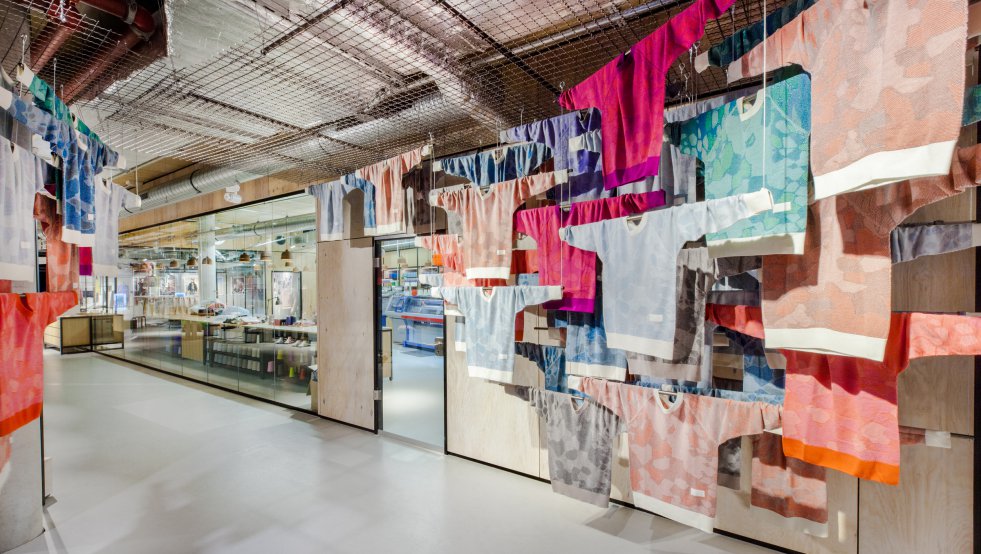
Customized merchandise will be able to specifically meet your customers demands – ensuring success with your products by directly meeting customer needs. This consumer insight can further be used to understand the trends and habits of your audience that can be utilized and replicated on a large scale.
Hosting Interactive Events: Kodak, 2016
Kodak hosted a pop-up store in London with Storefront in December 2016 to launch their first smartphone, the Kodak Ektra. The concept store named The Kodakery was an interactive space where customers were invited to events, photography masterclasses and workshops to test the product.
Kodak created a ‘photography hub’ for everyone, where professionals and amateurs alike could attend tutorials on how to use the Kodak Ektra, engage with experts and purchase exclusive merchandise, including the capsule collection with Opening Ceremony. It was an event that stayed firmly true to the Kodak brand while engaging beyond their core audience. By educating customers about how to use products, while showering them with exclusives, Kodak effectively nurtured future customers into loyalty towards the brand.
Ethos: Patagonia
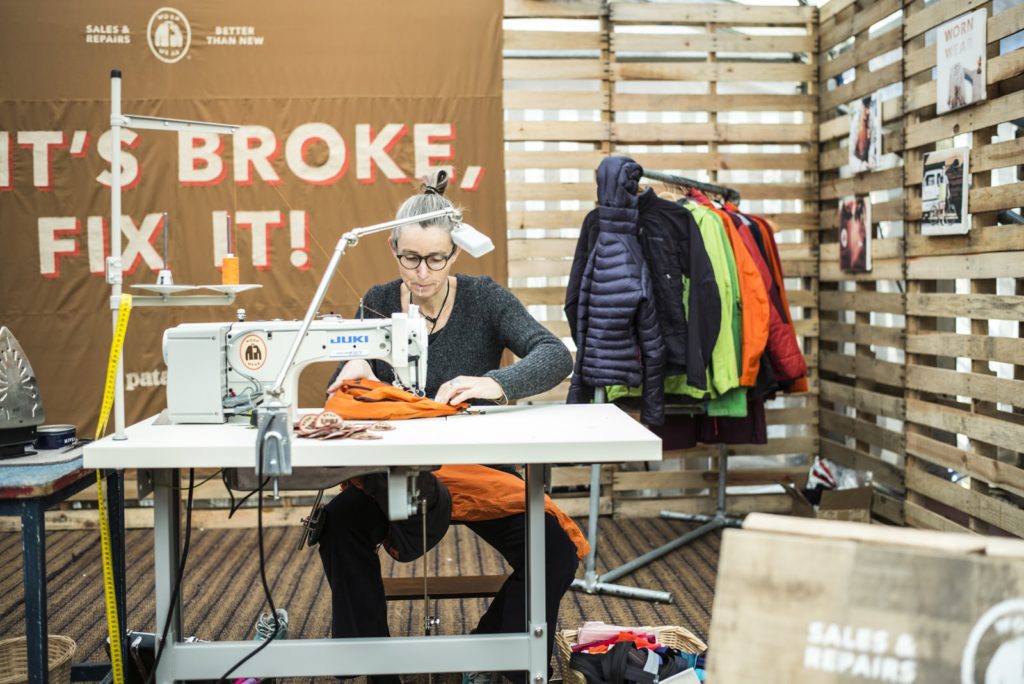
Pop-up stores provide the perfect opportunity for you to improve your customer’s relationship with your brand by educating them about your brand’s ethos and principles. Primarily this could involve any philanthropic activities or social responsibility projects your business is engaged in.
Patagonia ran a pop-up store in London that offered a ‘Worn Wear Repair’ service, mending customer’s garments even if they weren’t from Patagonia, and offering the chance to learn how they can repair their own clothes at home. The event sought to promote their ethos of reducing CO2 output and waste, with 100% of Black Friday sales being donated to support environmental organisations.
A pop-up with purpose, this event benefited the customer and promoted their environmentally conscious agenda.
Corporate Responsibility: Toms

Toms sought to use their temporary retail stores to teach their customers about their One for One giving campaign, a major campaign within their corporate social responsibility scheme. By placing 100 VR headsets in stores, customers could be taken on a journey through Peru to see the impact of the gifts of shoes, sight, water and safe childbirth that proceeds of the campaign provide. Not only did it provide an immersive experience for customers, but it emphasised that there is a genuine impact of the company’s charitable work.
Providing a Presence and Availability to Your Customers: Kanye West ‘Life of Pablo’
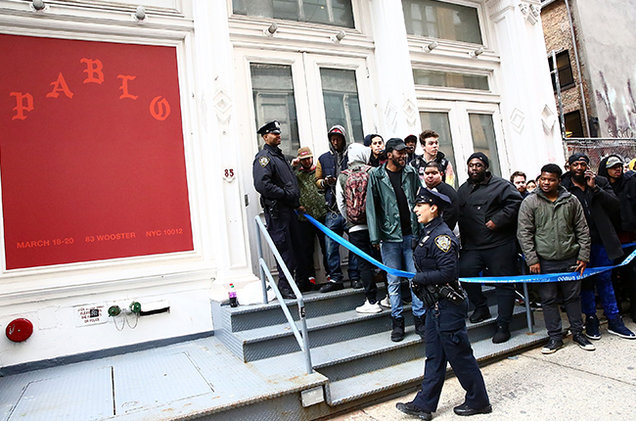
London, San Francisco, Berlin, Cape Town, Sydney, New York – these are just a few of the places Kanye West launched multiple pop-up stores last year. Here, fans were able to purchase merchandise from his ‘Life of Pablo’ album in over 21 cities. This provided accessibility to his fans across the globe for 3 days. Instead of making his fans travel a long-distance to his stores, Kanye brought it to them, a strategic plan to ensure convenience and maximum coverage.
This is the perfect way to reach your loyal customers and ensure they are able to keep purchasing your products – through a synchronised launch in multiple cities or around the world.
Key Takeaways
Despite the growth of eCommerce, everyday customers still still want to shop in physical stores and value an in-store experience.
Pop up stores can meet these demands as they:
- Are less expensive than a permanent retail store, typically a pop-up store costs $2,000 to set-up compared to $98,000 for a traditional store.
- Give the opportunity to test products in different stores and locations: gaining global attention.
- We are currently living in an experienced based economy, thus pop-ups are able to meet this through providing entertainment.
- Allow you to build relationships with the customers and increase brand loyalty.
This investment will provide a long-term benefit in relation to building brand loyalty and gaining awareness. Once you start retaining customers and selling your products, the expenses of the pop-up store will be paid off in a short amount of time.
A pop-up store is the ideal way to interact with potential customers and get established customers to remain interested in your business. In the long run, the small cost of running a pop-up store will be repaid by the brand awareness and loyalty that your pop-up has generated. Pop-up stores are the future of retail, so establish one today or risk getting left behind.
Keep in touch with your loyal customers through temporary retail stores and your brand will reap the rewards. To find and book your ideal Pop-Up Store head to our website and make your ideas happen.
- Pop Up 101: How To Design Your Pop-Up Store Layout - September 7, 2020
- 5 Reasons Why Your Brand Should Host a Holiday Pop-Up Store - December 10, 2017
- 4 Ways To Capitalize On The “Retail Crisis” in NYC - August 4, 2017

